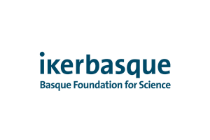 Aurreko ekintzak: Jennifer E. Arnold. Discourse level adaptation: are representations semantically specific?
Aurreko ekintzak: Jennifer E. Arnold. Discourse level adaptation: are representations semantically specific?
Jennifer E. Arnold. Discourse level adaptation: are representations semantically specific?
What: Discourse level adaptation: are representations semantically specific?
Where: BCBL Auditorium and zoom room # 2 (If you would like to attend to this meeting reserve at info@bcbl.eu)
Who: Professor Jennifer E. Arnold, Department of Psychology and Neuroscience, University of North Caroline Chapel Hill, NC, US
When: Thursday, Apr 25th at 12:00 PM noon
Language processing is adaptive; even adults adjust their biases to the most frequent structures in the local context (e.g., Thothariri & Snedeker, 2008; Fine et al., 2013). Such adaptation even occurs at the discourse level, where the interpretation of ambiguous pronouns is biased toward recently encountered patterns (Kaiser, 2009; Contemori, 2019). Johnson & Arnold (2023) exposed participants to multiple stories with pronouns that either always referred to the prior subject (Subject exposure list: Ana went hiking with Matt. She…) or the prior prepositional object (Nonsubject exposure list: Ana went hiking with Matt. He….). This exposure guided interpretation of ambiguous pronouns, which were assigned more often to the subject in the subject-exposure list than the nonsubject-exposure list. This shows that people adapt to the most frequent type of pronoun-antecedent relation in the local context.
But an open question is how the system figures out which of many possible patterns to adapt to. In a series of experiments, we systematically test whether adaptation only affects the interpretation of very similar contexts, or whether it generalizes across anaphor and antecedent types. Results suggest that discourse comprehension involves the activation of pronoun-antecedent structures. In a series of experiments, we show that these representations pool input across different predicate types for the purpose of classifying antecedents. People track antecedents in terms of both their semantic and syntactic properties, but when the input is diverse they generalize across semantic categories. People track the frequency of these structures and modulate processing biases in the direction of locally frequent patterns; we hypothesize that similar learning may underlie the development of discourse processing biases.








